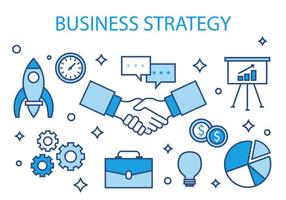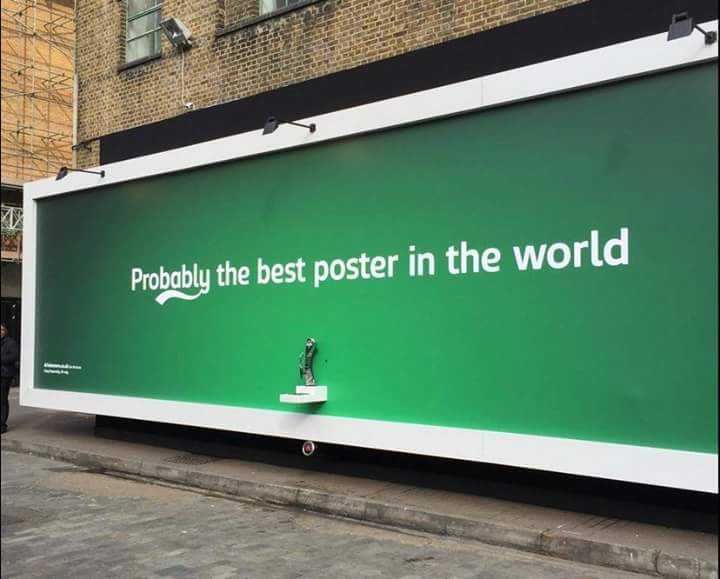Since reading a blog is not always easy, I will start sharing links of videos that have an ample amount of learning in them. These videos will deal with companies that have used different strategies to win/falter in the market.

Image Source: https://www.vecteezy.com/free-vector/strategy
Let's get started.
These are the first five videos that I m listing:
How Domino's became the major player in India?
- Video Link: https://www.youtube.com/watch?v=EK6_QNZa4S4
- Strategies to be learned: First mover's advantage, Local Strategic Partnership, Adoption of technology, Transnational and Multi-Domestic Strategy, Red Ocean and Blue Ocean, Market Penetration ( Ansoff Matrix )
- My Understanding ( only related to the video): This video talks about the facts and figures of how Domino's dominate the pizza QSR market by a huge margin from the second player Pizza hut. It talks about all of the strategies above and how they have been used by Domino's leader. They were the first of the few who started online food delivery and obviously the mandatory mention of the fastest delivery time because of the efficient delivery strategy. They are further planning growth into other Tier 2&3 cities which will propel them further along with their local partner Jubilant Works. Pizza Hut did not succeed like Domino's because of their focus on serving the dining experience whereas Pizza became more of a home party and hunger craving food which people ordered from Home and also the stores vary in terms of the look. Domino's identified the market well while pizza had no advantages in terms of price but was providing an experience where the need was of convenience. Papa John couldn't make it because of the late entry and the other two became major players. In addition, they mostly focussed in South India where geographical diversification could have worked.
What happened to GM in India?
- Video Link: https://www.youtube.com/watch?v=_f9sib9Auhs&t=1s
- Strategies to be learned: Global brand, transnational Strategy, Product Innovation, Margins, Competitive Forces, Service Network
- My Understanding ( only related to the video): GM tried to be everything for everyone evverywhere and they realised that it is not possible. Hence they started folding out from many a places. The decreasing market share in India was the major reason. Though they tried coming up with product cusotmised to Indian Market and they did good to but few of the mistakes costed them a lot. They had to face competition and were not able to match the others. The poor service network and declining sales was one of the reasons that they folded out. They dont have very deep pockets anymore to continue spending in the present as well as for the future. There is a shift in the consumer behaviour where this newer generation dont focus on owning but rather hiring services of Mobility solution providers. With the advent of Electric Cars and Automation, the industry is going through a tectonic shift and hence it is a very uncertain environment. Their rivals are Japanese and Korean Companies who are already established in the market. It also can be attributed to the leadership who are now focussed on keeping profitable business and hence making an organisational change. They are pruning all the loss making markets and focussing on latest technologies. Also there has been a degrowth in India and continous slowdown of the world market too. The way to go forward will be to focus on electric mobility and on markets that are profit oriented. They can also form strategic partnership to survive just like Ford did with Mahindra group.
Why happened to Dunkin Donuts in India?
- Video Link: https://www.youtube.com/watch?v=BXXdcgchAVw
- Strategies to be learned: Rapid Expansion, Changing consumption pattern, cultural differences, Health-oriented audience, Poor operational efficiency, Huge retail operational cost, local customized menus, Incorrect Brand association.
- My Understanding ( only related to the video): Dunkin Donuts partnered with Jubilant Food works but unlike domino's could not do well. The main reason was the cultural difference and the rapid expansion followed by them. Their operational cost was too high. They thought people will like Donuts but we Indians have a different breakfast routine. We like home-cooked food and eating it to fill our stomach for the day ahead whereas Donuts was seen more of as an impulse purchase and a pastry shop. The way to go forward will be adding the beverage line with hot beverages with reducing store sizes and increasing store numbers slowly. Also, the placing of Donuts needs to be changed from the perception of a 'Desert'.
Why is Harley-Davidson struggling in India?
- Video Link: https://www.youtube.com/watch?v=ATjsNO8_li8&t=5s
- Strategies to be learned: Product Differentiation, No Multi-Domestic Strategy, Product Innovation, Porters Five Forces, International Expansion, Dealer and Service Network is poor, Brand Loyalty, Cost Leadership, Product line expansion, Trade Disputes
- My Understanding ( only related to the video): Despite India being the largest market of 2 wheeler vehicles, Harley Davidson is struggling in India. One of the main reasons is its High price along with factors like better alternatives. It entered the Indian market late and has a poor dealer and service network. The bikes are very expensive for Indian Markets where different players are offering cheaper alternatives to them, even the likes of BMW. The presence of competitors like Royal Enfield, Java and Triumph also hinders its growth. They are trying to expand into the International market to offset their sales in America and also have started manufacturing facilities at different places so as to reduce the labor cost, shipping costs and improve trade relations but they have not factored well that their offering is very expensive and established players are stalling their sales. The way forward could be to act in the same line as BMW and also come up with different offering, product line expansion
Why Taco Bell failed in Dubai?
- Video Link: https://www.youtube.com/watch?v=0I27CA0CdIU
- Strategies to be learned: Cultural Food Difference, Family Culture, International Expansion, Customised Menu, Poor Local Partner, Local Taste, International Brand Recognition, Specialised Localised Campaign
- My Understanding ( only related to the video): Taco Bell belongs to Yum! Food which has brands like KFC in it. Taco Bell is very famous in US but couldnot make it in Dubai becuase the people here have different taste buds along with this they prefered going out and eating as more of a social gathering than just convenience for which Chili's performed well (reference to the store layout). Because of the lack of brand recognition along with a unknown food category, taco bell could not perform well. Even though they customised the menu to make it according to the Islamic law, still the sales did not take up. Though they succeded in Kuwait with a special mention to a localised campaign regarding taco's. Another reason was the presence of burger, it accounted for huge sales and taco could not place itself as a meal which one can enjoy with their family.
I hope you find all of these videos enriching and helpful. The best way to go about is not just listening to it but understand the situation they faced and how they solved/faltered will help you in the future to avoid those.
This was the first of many, I will keep compiling a list of these kinda videos.

